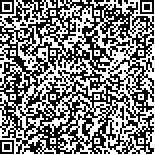| 引用本文: | 孟盼,向韵,雷昌,王宇红,黄丹,蔡川,张秀丽.左归降糖解郁方对模拟糖尿病并发抑郁症环境下小胶质细胞活化的干预作用及其机制研究[J].中国现代应用药学,2022,39(18):2309-2315. |
| MENG Pan,Xiang Yun,LEI Chang,WANG Yuhong,HUANG Dan,CAI Chuan,ZHANG Xiuli.Study on Intervention Effect and Mechanism of Zuogui Jiangtang Jieyu Formula on Microglia Activation in Simulated Diabetic Depression[J].Chin J Mod Appl Pharm(中国现代应用药学),2022,39(18):2309-2315. |
|
| |
|
|
| 本文已被:浏览 648次 下载 364次 |

码上扫一扫! |
|
|
| 左归降糖解郁方对模拟糖尿病并发抑郁症环境下小胶质细胞活化的干预作用及其机制研究 |
|
孟盼1,2, 向韵1,2, 雷昌1,2, 王宇红1,2, 黄丹1,2, 蔡川1,2, 张秀丽1,2
|
|
1.湖南中医药大学科技创新中心, 长沙 410208;2.湖南省中药粉体与创新药物省部共建国家重点实验室培育基地, 长沙 410208
|
|
| 摘要: |
| 目的 探讨模拟糖尿病并发抑郁症环境下,左归降糖解郁方对小胶质细胞活化的调节作用及干预机制。方法 将体外培养的HAPI细胞分为空白组、模型(高糖+皮质酮)组、左归降糖解郁方组及二甲双胍+氟西汀组。采用150 mmol·L–1高糖联合200 μmol·L–1皮质酮的方法模拟糖尿病并发抑郁症状态下小胶质细胞的活化状态,给予10%含药血清后,免疫荧光染色观察HAPI细胞形态变化及Tim3表达,qPCR及ELISA法检测HAPI细胞M1/M2型表面标记分子及促炎性因子与抗炎性因子的表达变化,Western blotting检测糖皮质激素受体(glucocorticoid receptor,GR)、TLR4及Tim3的蛋白表达。结果 与空白组比较,模型组中HAPI细胞胞体体积变大,细胞数量减少,M1型标记分子、促炎性因子以及Tim3表达的上调。与模型组相比,左归降糖解郁方组的HAPI细胞胞体回缩且数量增多,HAPI细胞M1型表面标记分子及促炎性因子的表达受到抑制,且M2型表面标记分子及抗炎性因子的表达上调;此外,左归降糖解郁方还可促进GR上调,降低HAPI细胞中TLR4及Tim3的表达。结论 左归降糖解郁方可能通过皮质酮介导的GR/TLR4/Tim3信号通路调节MG的M1/M2型活化。 |
| 关键词: 小胶质细胞活化 Tim3 糖尿病并发抑郁症 左归降糖解郁方 |
| DOI:10.13748/j.cnki.issn1007-7693.2022.18.002 |
| 分类号:R285.5 |
| 基金项目:国家自然科学基金项目(81874462,81603608);湖南省教育厅优秀青年基金项目(19B426);湖南省重点领域研发计划(2020SK2123) |
|
| Study on Intervention Effect and Mechanism of Zuogui Jiangtang Jieyu Formula on Microglia Activation in Simulated Diabetic Depression |
|
MENG Pan1,2, Xiang Yun1,2, LEI Chang1,2, WANG Yuhong1,2, HUANG Dan1,2, CAI Chuan1,2, ZHANG Xiuli1,2
|
|
1.Technology Innovation Center, Hunan University of Chinese Medicine, Changsha 410208, China;2.Hunan Key Laboratory of Powder and Innovative Drugs State Key Laboratory of Ministry Training Bases, Changsha 410208, China
|
| Abstract: |
| OBJECTIVE To explore the regulation effect and intervention mechanism of Zuogui Jiangtang Jieyu formula (ZGJTJY) on microglia activation in simulated diabetic depression.METHODS Hapi cells cultured in vitro were divided into blank group,model group (high glucose+corticosterone),ZGJTJY group and metformin+fluoxetine group.High glucose (150 mmol·L-1) and corticosterone (200 μmol·L-1) were used to simulate the activation of microglia in simulated diabetic depression.After adding 10% volume of drug-containing serum,immunofluorescence staining was used to observe the morphological changes of HAPI cells and Tim3 expression.qPCR and ELISA were used to detect the expression changes of M1/M2 surface marker molecules and pro-inflammatory and anti-inflammatory factors of HAPI cells.Western blotting was used to detect the protein expression of glucocorticoid receptor (GR),TLR4 and Tim3 RESULTS Compared with the blank group,the cell bodies in the model group was larger,the amount of cells was decreased,and the expression of M1 surface marker molecules,pro-inflammatory factors and Tim3 was up-regulated.Compared with model group,the swell of HAPI cell in ZGJTJY formula group was reversed,the amount of cells was increased,the expression of M1 markers and pro-inflammatory factors were inhibited while the expression of M2 surface marker molecules and anti-inflammatory factors was up-regulated.In addition,ZGJTJY formula also up-regulated the protein level of GR,but down-regulated the expression level of TLR4 and Tim3 in HAPI cell. CONCLUSION The intervention of ZGJTJY formula on microglia activation is closely related with the GR/TLR4/Tim3 signal pathway. |
| Key words: microglia activation Tim3 diabetic depression Zuogui Jiangtang Jieyu formula |
|
|
|
|
